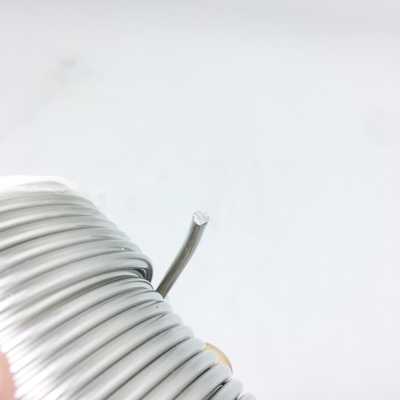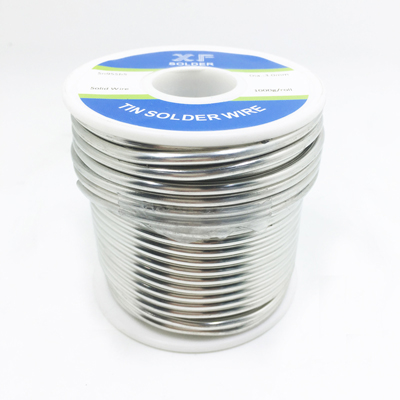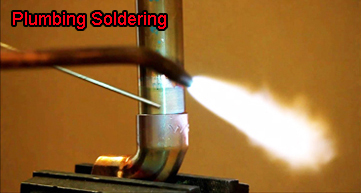No Flux Soldering Wire 3.2mm for Plumbing
No Flux Soldering Wire 3.2mm for Plumbing
Soldering is a crucial process in plumbing,
where metal pipes and fittings are joined together by melting a metal filler,
called solder, and allowing it to flow into the joint. Flux, a chemical
compound used to remove oxides and other impurities from the metal surfaces, is
typically used to improve the wetting and flow of solder. However, there are
soldering wires available that do not have a flux core, so that users can
choose the proper compatible type of flux in order to conduct for different
applications. In this article, we will explore the benefits and challenges of
using no flux soldering wire 3.2mm for plumbing.

Overview of No Flux Soldering Wire 3.2mm
No Flux Soldering wire 3.2mm is a type of
solder that does not contain a flux core in the wire. Instead, it requires a
separate flux to be applied to the joint before soldering. This type of
soldering wire is suitable for applications where the flux core in the wire may
not be compatible with the metal surfaces being joined, or where the use of a
separate flux may provide better results. Generally for plumbing assembly, an aggressive
flux is required, so plumbers will prefer to apply separate flux before
soldering, rather than using a flux core wire.
Benefits of No flux soldering wire 3.2mm for Plumbing
Versatility
No flux soldering wire 3.2mm offers versatility in plumbing applications, as it allows the user to select the appropriate flux for the specific metal surfaces being joined. This flexibility ensures that the soldering process is optimized for the best possible results. Using a separate flux with no flux soldering wire 3.2mm can improve the quality of the joint. The right flux can help to remove any impurities on the metal surfaces, allowing the solder to flow more easily and creating a strong bond between the metal pieces.
Improved Joint Quality
Using a soldering wire 3.2mm diameter, it
will give enough amount of solder into the joints and well filled up the gap.
This will lead to a very nice and strong solder joint. And this improves the
working efficiency of plumbers.
Reduced Residue
No flux soldering wire 3.2mm can reduce the
amount of residue left on the joint after soldering. Flux residue can cause
corrosion, and the use of a separate flux can reduce the amount of residue left
behind, thereby increasing the lifespan of the joint.

Challenges of No flux soldering wire 3.2mm for Plumbing
Increased Time and Effort
Using no flux soldering wire 3.2mm requires
the additional step of applying a separate flux to the joint before soldering.
This can increase the time and effort required to complete the soldering
process, especially for larger projects.
Proper Flux Selection
Selecting the right flux for the specific
metal surfaces being joined is critical when using no flux soldering wire
3.2mm. The wrong flux can lead to poor results, including a weak bond,
increased residue, or even damage to the metal surfaces.

Tips for Using No flux soldering wire 3.2mm
Use the Right Flux
Choosing the right flux is essential when
using no flux soldering wire 3.2mm. The flux should be selected based on the
specific metal surfaces being joined and should be compatible with the solder
being used.
Clean and Prep the Joint
Cleaning and preparing the joint is crucial
for successful soldering, even when using no flux soldering wire 3.2mm. The
joint should be free of any dirt, debris, or corrosion before applying the flux
and solder.
Practice Proper Technique
Proper technique is essential for
successful soldering when using no flux soldering wire 3.2mm. This includes
holding the solder at the right angle to the joint, heating the joint evenly,
and applying the solder in the right amount and at the right time. Practice on
scrap materials before attempting to solder a live joint.
If you need to buy No flux soldering wire
3.2mm for Plumbing from China, please contact us. Email: xfsolder@gmail.com or xfsolder@163.com ; Whatsapp/Wechat: 0086
1345070997
